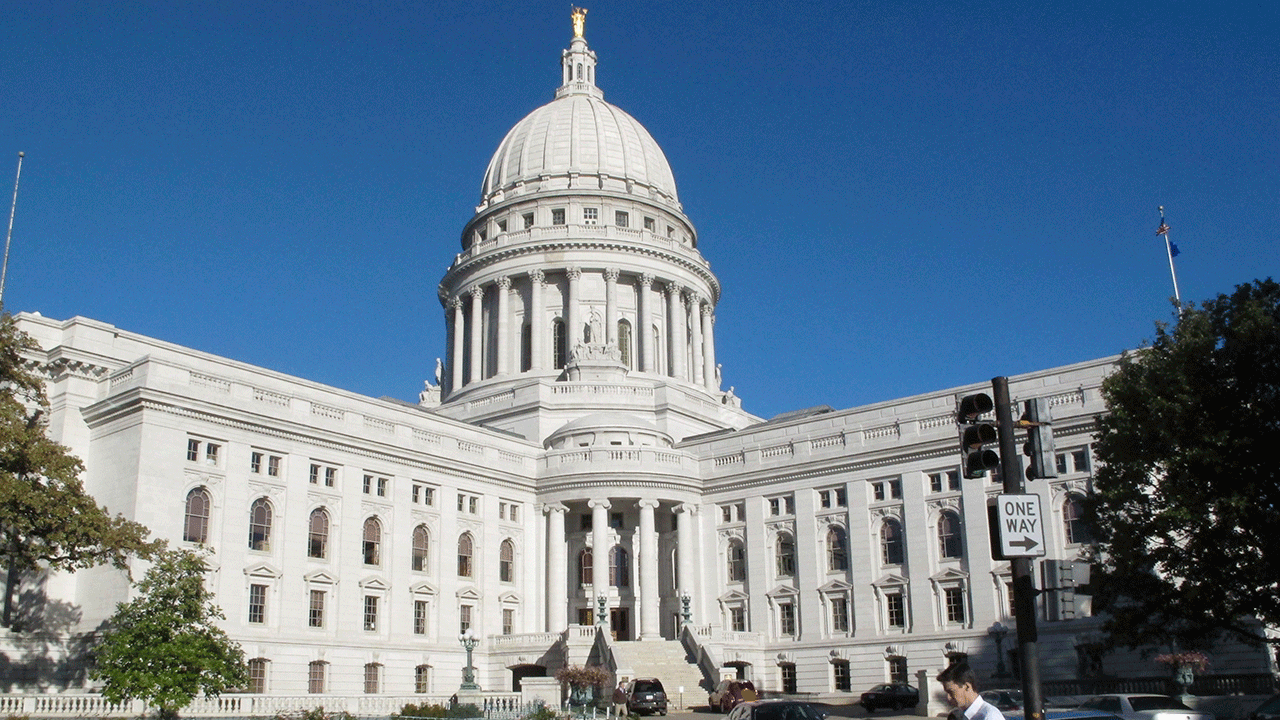Biden delivers incoherent lines in Wisconsin brewery speech
President Biden made another series of gaffes while talking about beer at a Wisconsin brewery on Thursday.
- Consultants hired by the Wisconsin Supreme Court identified the Republican Legislature and a conservative law firm's maps as partisan gerrymanders.
- The consultants noted key criteria for map improvement, including political neutrality, compactness, contiguity and preserving communities of interest.
- The battleground state of Wisconsin, where Republicans control the Legislature despite Democratic wins in statewide elections, faces significant political implications.
Consultants hired by the Wisconsin Supreme Court to examine maps redrawing state legislative districts said Thursday that plans submitted by the Republican Legislature and a conservative law firm are partisan gerrymanders, but they stopped short of declaring the other four maps constitutional.
Only the court can make the determination of whether any of those four plans from Democratic Gov. Tony Evers, Democratic lawmakers and others are constitutional, wrote Jonathan Cervas, of Carnegie Mellon University in Pittsburgh, and Bernard Grofman, of the University of California, Irvine.
Any of those maps could be improved based on criteria the court identified as being important, including political neutrality, compactness, contiguity and preserving communities of interest, the consultants wrote.
They declined to draw their own maps, but said they could do so quickly if the court instructed them to.

The Wisconsin state Capitol is seen on Oct. 10, 2012, in Madison, Wisconsin. Consultants hired by the Wisconsin Supreme Court to examine maps redrawing state legislative districts said on Thursday that plans submitted by the Republican Legislature and a conservative law firm are partisan gerrymanders. (AP Photo/Scott Bauer, File)
The political stakes are huge in the battleground state where Republicans have had a firm grip on the Legislature since 2011 even as Democrats have won statewide elections, including for governor in 2018 and 2022. Four of the past six presidential victors in Wisconsin have been decided by less than a percentage point.
Evers hailed the report as confirmation that the Republican maps are gerrymandered.
"The days of Wisconsinites living under some of the most gerrymandered maps in the country are numbered," Evers said in a statement. "While this is just one step in this process, today is an important day for the people of Wisconsin who deserve maps that are fair, responsive, and reflect the will of the people."
Under maps first enacted by Republicans in 2011, and then again in 2022 with few changes, the GOP has increased its hold on the Legislature, largely blocking major policy initiatives of Evers and Democratic lawmakers for the past five years.
The victory last year by a liberal candidate for Wisconsin Supreme Court, who called the current Republican maps "rigged," cleared the path for the court's ruling in December that the maps are unconstitutional because districts are not contiguous as required by law.
The court ordered new maps with contiguous districts, but also said they must not favor one party over another. Republicans have indicated that they plan an appeal to the U.S. Supreme Court, arguing due process violations, but it’s not clear when that would come.
The consultants reviewed proposed maps submitted by Evers, fellow Democrats, Republicans, academics and others that would reduce the Republican majorities that sit at 64-35 in the Assembly and 22-10 in the Senate.
The consultants on Thursday called the maps from the Legislature and the conservative Wisconsin Institute for Law and Liberty "partisan gerrymanders." The Legislature's map was virtually unchanged from what the current boundaries are.
The consultants rejected Republican claims that their majorities in the Legislature are due to Democratic support being concentrated in cities, while the GOP had broader support in a larger geographic area.
"That kind of insulation from the forces of electoral change is the hallmark of a gerrymander," they wrote. "To put it simply, geography is not destiny."
Cervas and Grofman wrote that the four Democratic maps were similar on most criteria and from a "social science point of view," are "nearly indistinguishable."
Rick Esenberg, president of the law firm whose map was deemed to be a partisan gerrymander, blasted the consultants' findings.
"The report hides its bias behind a fog of faux sophistication," Esenberg said in a statement. "Let’s be clear, our maps have been rejected for one reason and one reason alone, they don’t produce the partisan outcomes the experts or many on the Court want."
It ultimately will be up to the Wisconsin Supreme Court, with a 4-3 liberal majority, to decide which maps to enact. The state elections commission has said that must be done by March 15 to meet deadlines for candidates running in the fall.
Evers on Tuesday vetoed a last-ditch effort by Republicans to enact new lines to avoid the court ordering maps. Republicans largely adopted the Evers maps but moved some lines to reduce the number of GOP incumbents who would have to face one another in the new districts.
WISCONSIN REPUBLICANS HASTILY APPROVE NEW LEGISLATIVE MAPS
Evers rejected it, calling it another attempt by Republicans to gerrymander the districts in their favor.
Under most of the newly proposed maps, Republicans would retain their majorities in the Legislature, but the margin would be significantly tightened, judging by an analysis by a Marquette University researcher.
The Wisconsin Supreme Court has also been asked by Democrats to take up a challenge to the state's congressional district lines. That lawsuit argues the court's decision to order new state legislative maps opens the door to challenging the congressional map. Republicans hold five of the state's eight congressional seats.
The moves in Wisconsin come as litigation continues in more than dozen states over U.S. House and state legislative districts that were enacted after the 2020 census.




